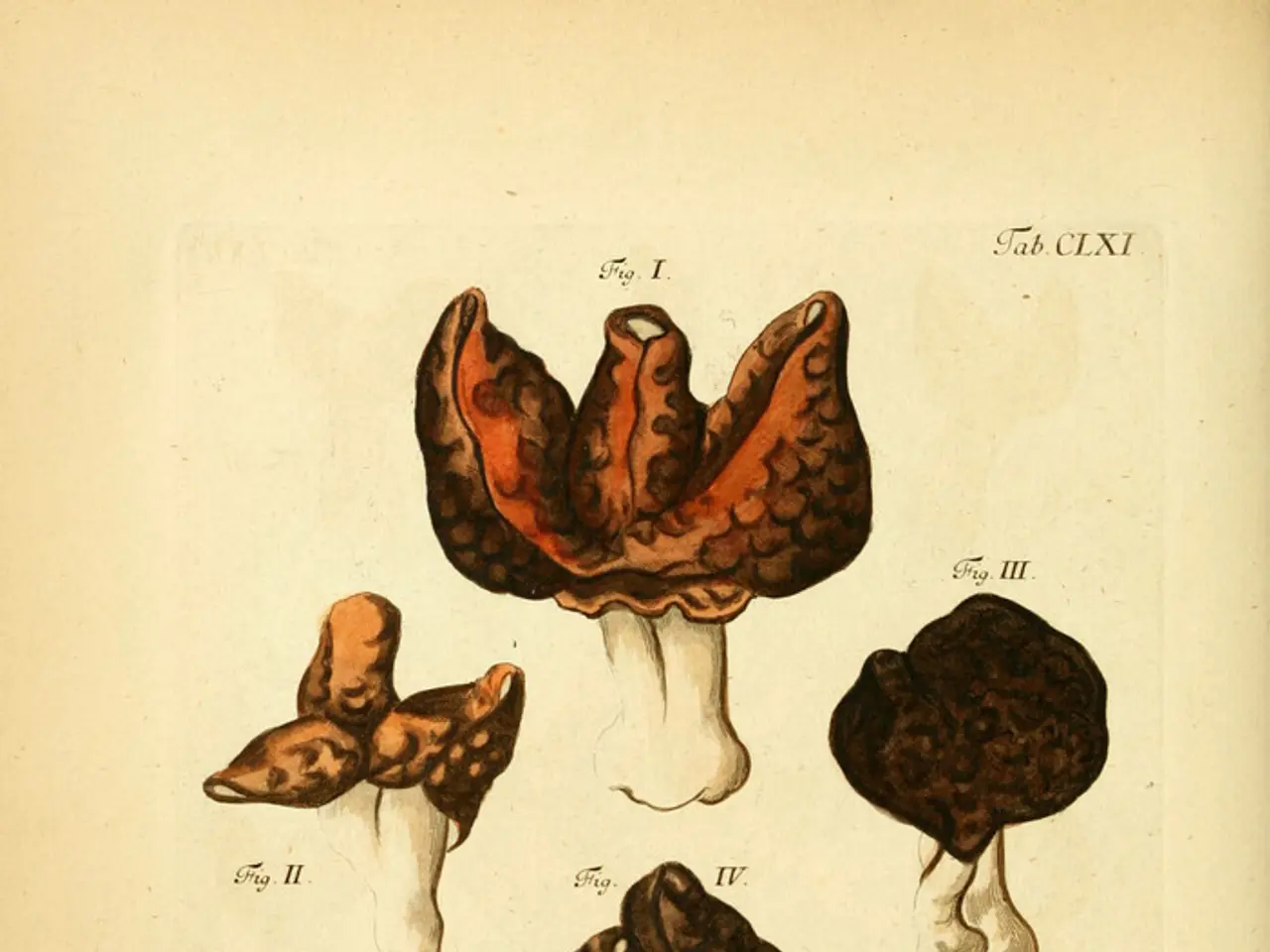Harvesting and Utilizing Chaga Fungus
In the cold climates of North America, a unique and medicinal fungus known as Chaga can be found growing on birch trees. This rewarding experience not only ensures high-quality material, but also supports sustainable foraging.
Chaga is most often foraged during the colder seasons, including winter, autumn, and early spring. The best regions for Chaga growth are cold climates with birch forests, such as Alaska, Canada (especially the boreal forests), and the northern parts of the United States like Minnesota and Alaska.
If you're venturing out to forage for Chaga, a knife, hand saw, or small axe is recommended for harvesting. It's important to only harvest what you need and leave smaller pieces for continued growth, as overharvesting has become a concern in some parts of the world.
Once harvested, Chaga should be dried in the sun or in a dehydrator, and stored in an airtight container in a dry and cool environment.
Cooking Chaga is a simple process. Ground dried Chaga should be simmered in water for at least 10-15 minutes, and the liquid should turn a dark coffee-like color once ready to drink. Chaga is most commonly consumed as tea or "chaga coffee".
Chaga has a unique flavor that is aromatic, fruity, and has hints of vanilla, cherry, raspberry, caramel, or vanilla. It's also popular for its high antioxidant content, immunomodulatory properties, and use in cancer treatment.
However, it's important to note that Chaga is considered a canker, a tumor-like growth, caused by the fungus Inonotus obliquus. While it's safe for most individuals, it may have negative side effects such as acting as a mild blood thinner and containing oxalates, which can lead to kidney stones.
In addition to its medicinal uses, Chaga has a practical use as a fire starter. Ground dried Chaga can be used as a fire starter with a flint and steel, and it can also be used as a portable ember due to its tenancy to smolder and not burn a flame.
The sweet-smelling smoke produced by Chaga was used by native cultures to keep mosquitoes and other flies at bay and as an incense in spiritual applications.
When foraging for Chaga, it's important to do so with respect for the organisms and ecosystem. Winter harvesting may also be beneficial for the tree host, as it is in dormancy and less likely to get an infection. If there's snow, the dark contrast of the Chaga amongst the white of the birch bark and snow makes it particularly easy to spot.
Once you've harvested and prepared your Chaga, you can enjoy it as a hot beverage. A recommended serving is 1-2 grams per person. If you have leftover pieces of Chaga, they can be decocted again in simmering water multiple times until there is no more pigment or flavor being released.
Finally, for those interested in extracting more of Chaga's medicinal properties, a double extraction tincture can be made with Chaga. This process may be considered more effective as alcohol extraction helps get triterpenes and other non-water soluble compounds.
In conclusion, foraging for Chaga is a rewarding experience that offers both practical and medicinal benefits. With proper care and respect for the environment, this unique fungus can continue to be enjoyed for generations to come.
Read also:
- Pharmaceutical Marketing's Debated Impact on Medical Professionals' Decisions
- Dishwasher Failures: Identifying Common Problems and Solutions
- Benefits of Using Lemon Essential Oil
- Real-world navigation impact on fixation-related potentials: Comparing effects of landmark visualization styles during mobile mapping








